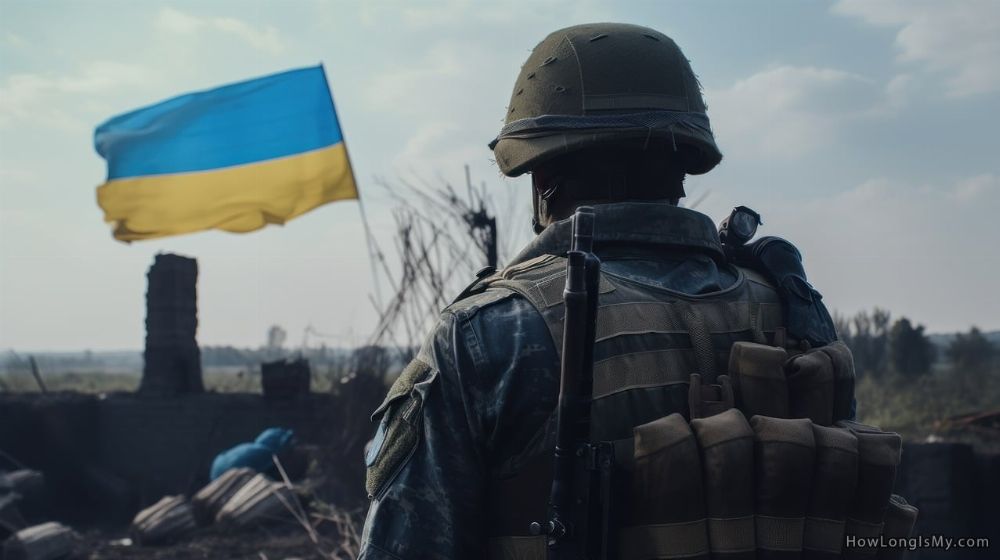The ongoing conflict in Ukraine, which began in 2014 when Russia annexed Crimea and escalated into a full-blown war in Eastern Ukraine in February of 2022, has garnered substantial international attention.
 The United States, in particular, has played a significant role in supporting Ukraine in its efforts to defend its sovereignty and territorial integrity. However, the duration and nature of U.S. support for the war in Ukraine remain contingent on various factors, including political dynamics in the U.S. and evolving geopolitical realities. This article explores the potential situations in which the U.S. may reconsider or adjust its support for Ukraine.
The United States, in particular, has played a significant role in supporting Ukraine in its efforts to defend its sovereignty and territorial integrity. However, the duration and nature of U.S. support for the war in Ukraine remain contingent on various factors, including political dynamics in the U.S. and evolving geopolitical realities. This article explores the potential situations in which the U.S. may reconsider or adjust its support for Ukraine.
Factors Influencing U.S. Support for the War in Ukraine: A Complex Equation
Changing U.S. Administrations
ne of the key determinants of U.S. foreign policy is the leadership and priorities of the sitting administration. Presidential transitions can lead to shifts in foreign policy stances, including support for Ukraine. For instance, a new administration may choose to reevaluate its commitment to providing military and financial assistance to Ukraine based on its own strategic objectives and assessments of the situation. However, it’s important to note that support for Ukraine has enjoyed bipartisan backing in the U.S. Congress, which may mitigate abrupt changes in policy.
Congressional Oversight
Congressional support for Ukraine has been a consistent feature of U.S. policy. Both Democratic and Republican lawmakers have demonstrated a commitment to aiding Ukraine in its struggle against Russian aggression. However, if there is a significant shift in the composition of Congress due to elections or other factors, it could potentially impact the allocation of resources and the level of support provided to Ukraine.
Geopolitical Developments
The geopolitical landscape is dynamic, and international events can influence U.S. support for Ukraine. For instance, changes in Russia’s behavior or other global crises may lead the U.S. to reconsider its approach to the conflict. Additionally, if a peaceful resolution to the conflict becomes more viable and is supported by key stakeholders, the U.S. may adjust its stance accordingly.
The Duration of the Conflict
The duration of the conflict itself is a critical factor. Prolonged conflicts can strain resources and patience, potentially leading the U.S. to reassess the feasibility of a military solution and the effectiveness of its support. However, the commitment to Ukraine’s territorial integrity remains a fundamental principle in U.S. foreign policy, and support may continue even in protracted conflicts.
Domestic Priorities
U.S. foreign policy is influenced by a range of domestic priorities, including economic concerns, healthcare, infrastructure, and more. Competing priorities can impact the level of resources available for international engagements. Shifts in domestic policy focus may influence the extent to which the U.S. can sustain its support for Ukraine.
International Diplomacy and Peace Negotiations
The pursuit of a peaceful resolution to the conflict through diplomacy and negotiations can significantly influence U.S. support for Ukraine. If substantial progress is made in diplomatic efforts, such as the Minsk agreements or other negotiations involving key stakeholders, the U.S. may reassess its military and financial support. Conversely, if diplomatic initiatives stall or fail, the U.S. could choose to intensify its backing for Ukraine as a means to pressure Russia to engage in more meaningful negotiations.
Escalation of Conflict
 Any significant escalation of the conflict in Ukraine, whether initiated by Russia or Ukrainian forces, could trigger a reevaluation of U.S. support. Escalation might lead to increased casualties and destruction, potentially prompting the U.S. to reconsider the scope and nature of its involvement. Conversely, a de-escalation of hostilities could provide an opportunity for the U.S. to recalibrate its support towards stabilization and recovery efforts.
Any significant escalation of the conflict in Ukraine, whether initiated by Russia or Ukrainian forces, could trigger a reevaluation of U.S. support. Escalation might lead to increased casualties and destruction, potentially prompting the U.S. to reconsider the scope and nature of its involvement. Conversely, a de-escalation of hostilities could provide an opportunity for the U.S. to recalibrate its support towards stabilization and recovery efforts.
Public Opinion and Advocacy
Public opinion and advocacy groups can exert pressure on policymakers. If there is a substantial shift in public sentiment regarding U.S. involvement in Ukraine, it may impact the willingness of elected officials to continue or expand support. Additionally, advocacy groups dedicated to Ukraine-related issues can influence the discourse and shape policy decisions.
Economic Considerations
Economic factors, both domestic and international, can impact U.S. support. Economic challenges at home, such as a financial crisis or recession, may limit the resources available for foreign assistance. On the international front, economic sanctions imposed on Russia as a response to its actions in Ukraine can be a tool of leverage, potentially influencing U.S. support dynamics.
Evolving Threat Perceptions
Changes in U.S. threat perceptions, particularly concerning Russia’s behavior in Europe and globally, can affect the level of support for Ukraine. If Russia’s actions are perceived as increasingly aggressive or expansionist, the U.S. may strengthen its commitment to Ukraine as part of a broader strategy to counter Russian influence. Conversely, if Russia adopts a less confrontational stance, U.S. priorities may shift.
Multilateral Cooperation
 The level of support from the U.S. can also depend on the extent of multilateral cooperation. If the U.S. perceives a unified front among its allies and international partners in support of Ukraine, it may be more inclined to sustain its involvement. Conversely, if international partners scale back their support or diverge on their Ukraine policies, it could affect U.S. decisions.
The level of support from the U.S. can also depend on the extent of multilateral cooperation. If the U.S. perceives a unified front among its allies and international partners in support of Ukraine, it may be more inclined to sustain its involvement. Conversely, if international partners scale back their support or diverge on their Ukraine policies, it could affect U.S. decisions.
In conclusion, U.S. support for the war in Ukraine is influenced by a multitude of interconnected factors, including political dynamics, geopolitical developments, diplomatic efforts, conflict escalation or de-escalation, public opinion, economic considerations, threat perceptions, and multilateral cooperation. The situation is highly fluid, and the U.S. government continuously assesses these factors to determine the best course of action. While U.S. support for Ukraine’s sovereignty has been a consistent policy, it can adapt in response to changing circumstances and priorities to achieve a peaceful resolution to the conflict and promote regional stability.
